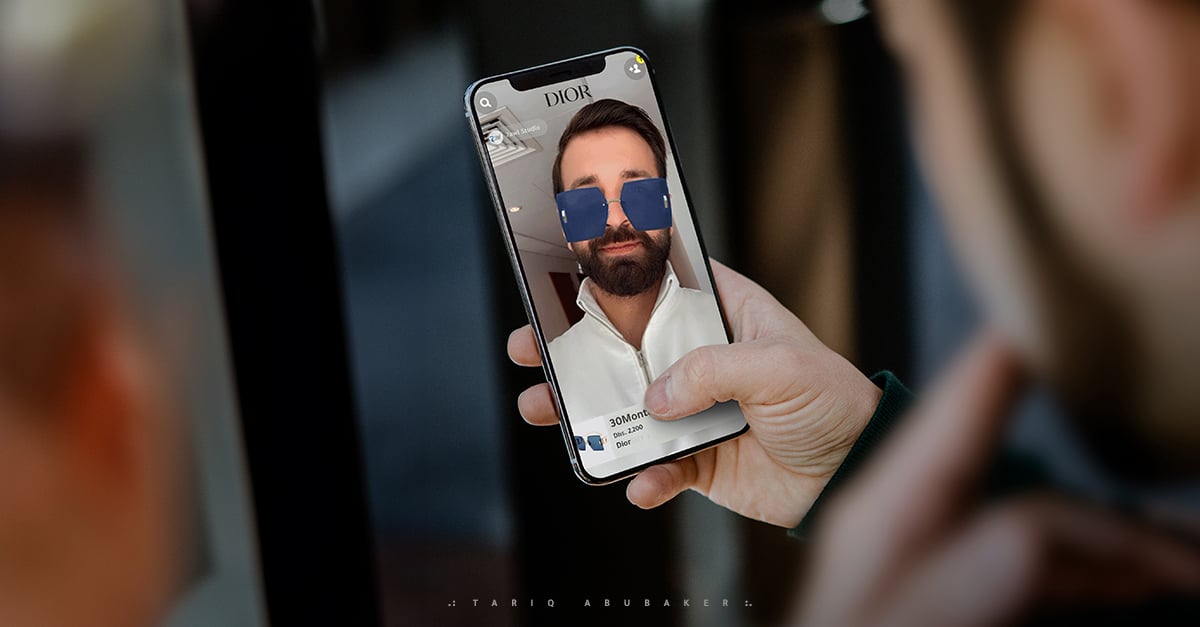With over 300 million daily Snapchat users engaging with AR, it’s clear that this technology has become a powerful tool for driving shopping behaviors. As 2025 unfolds, AR is becoming a central element in brands’ strategies, with studies showing that brands using AR try-ons experience conversion rates that are three times higher than those relying on static ads. By 2026, it is expected that 30% of social commerce will be powered by AR.
Why Snap AR is Critical for Businesses in 2025
The demand for augmented reality has been accelerating, with consumer behavior shifting toward more immersive shopping experiences. In fact, 61% of shoppers now prefer stores that offer AR, and the market is primed for further growth, with AR projected to power 30% of social commerce by 2026. Early adopters of AR, like Sephora and Walmart, have already seen sales increases of up to 23% by integrating AR into their shopping experiences.
What makes AR adoption even more attractive is the ease with which it can be integrated into existing platforms. Snap’s Shopify integration, along with innovations like Spectacles AR glasses, removes many of the technical barriers businesses once faced, making it easier than ever for brands to implement AR in their strategies.
Monetizing Snap AR: Proven Strategies for Success
Virtual Try-Ons: A Game Changer for Conversions and Returns
One of the most effective ways businesses are using Snap AR is through virtual try-ons, a technology that allows consumers to see how products would look on them before making a purchase. This is especially important for industries like fashion and eyewear, where buyer hesitation often leads to high return rates.
Take Warby Parker as an example. By integrating Snap AR into their shopping experience, they allowed customers to try on glasses virtually. This not only led to a 23% increase in conversions but also helped reduce returns by 18%. For companies in the Middle East, brands like Namshi have found similar success with AR hijab try-ons, which resulted in seven times more engagement compared to traditional video ads.
To get started with virtual try-ons, businesses should use Snap’s 3D Asset Manager to digitize products and test with popular items like sunglasses or clothing that are known to generate high interest.
Gamified Commerce: Turning Engagement into Profit
Another powerful way brands are monetizing AR is by incorporating gamified experiences. These AR games encourage customers to interact with the brand in fun and engaging ways, driving both awareness and purchases.
Beyond games, businesses can offer rewards and incentives for customers who engage with AR experiences, further enhancing customer loyalty. Partnering with influencers to promote branded lenses can also help expand reach and attract new customers.
Shoppable AR: The Future of Instant Purchasing
The ability to shop directly within AR is another rapidly growing trend. Shoppable AR experiences are revolutionizing how consumers purchase products by allowing them to complete transactions without ever leaving the augmented reality experience.
For example, Dior’s AR lipstick try-ons have resulted in an 8% direct-to-cart conversion rate, showing just how effective shoppable AR can be. In the Middle East, Saudi beauty brand Balqis added AR makeup filters with instant checkout, which led to a 35% increase in average order value. The key to success with shoppable AR is integrating with platforms like Shopify, which enables businesses to make purchases seamless and immediate.
How to Get Started with Snap AR
To implement Snap AR successfully, businesses should start with simple initiatives like branded filter campaigns. These campaigns are relatively easy to execute and can provide valuable insights into customer engagement, including metrics such as time spent interacting with the AR experience, swipe-up rates, and conversions.
Once initial campaigns are launched, businesses can scale by using Snap’s AR Analytics Dashboard to track performance and identify the most successful AR lenses. These insights can then inform future campaigns and help brands refine their AR strategies for maximum impact.
For those looking to monetize AR more directly, platforms like Shopify allow businesses to enable in-lens purchases, making it easy for customers to shop directly through their AR experience. Additionally, licensing popular AR lenses to complementary brands can create new revenue streams.
Next Steps for Businesses
If you’re not already incorporating AR into your strategy, now is the time to start. At 7awi Media Group, as a proud Snap AR partner, we’ve created over 80 AR lenses, amassing an impressive 320M views and 300M plays. Our creativity and expertise in AR can help bring your brand’s vision to life. Experiment with Snap AR by launching a branded lens campaign, and track the engagement and revenue impact closely. Work with an AR developer or leverage Snap’s Lens Studio to create customized experiences that resonate with your audience. Finally, make sure to measure the financial impact of AR beyond just brand awareness this is where the true value lies.
The Bottom Line: AR is the Future of Profit
As Snap’s CEO, Evan Spiegel, noted, “The AR economy will be bigger than mobile advertising within 5 years.” This statement reflects the growing importance of AR not just as a marketing tool, but as a driver of new revenue streams. For businesses, the opportunity is clear: start experimenting with Snap AR today and begin exploring the potential of this powerful technology to drive both engagement and profits.




